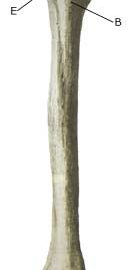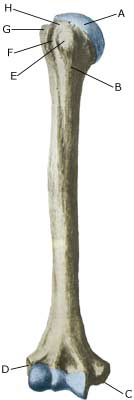|
||
|
||
| Cause: A fracture of the humerus can occur in cases of a direct fall on the outstretched arm. The fracture may occur anywhere on the humerus, but a fracture through the neck of the humerus (collum) and the middle of the long tubular bone (corpus) are the most common locations. However, in children especially a fracture of the upper arm just above the elbow is often seen (fractura supracondylaris humeri), which in rare cases can cause entrapment of blood vessels and nerves.
Symptoms: Sudden pain in the elbow region and pain induced constriction of movement of the arm after a fall. Acute treatment: Click here. Examination: Sudden, powerful pains in the arm with constriction of movement after a fall, should always lead to acute medical examination due to the risk of damage to the blood vessels and nerves. The fracture is usually visible on x-rays, and on the basis of the type of fracture, the correct treatment can be determined. Treatment: The fracture can normally be set in place under an aenesthetic, followed by bandaging for a few weeks. Surgical fixation may be required for certain types of fractures. Rehabilitation: When pain has decreased and the bandage has been removed fitness training in the form of cycling and running may be started along with retraining as specified under rehabilitation, general. Children will often be able to resume sports activity within 2-3 months. Complications: In the vast majority of cases the fracture heals without complications although in some instances a poor healing occurs affecting the blood and nerve supply to the arm, or development of muscle acute compartment syndrome (article). |


